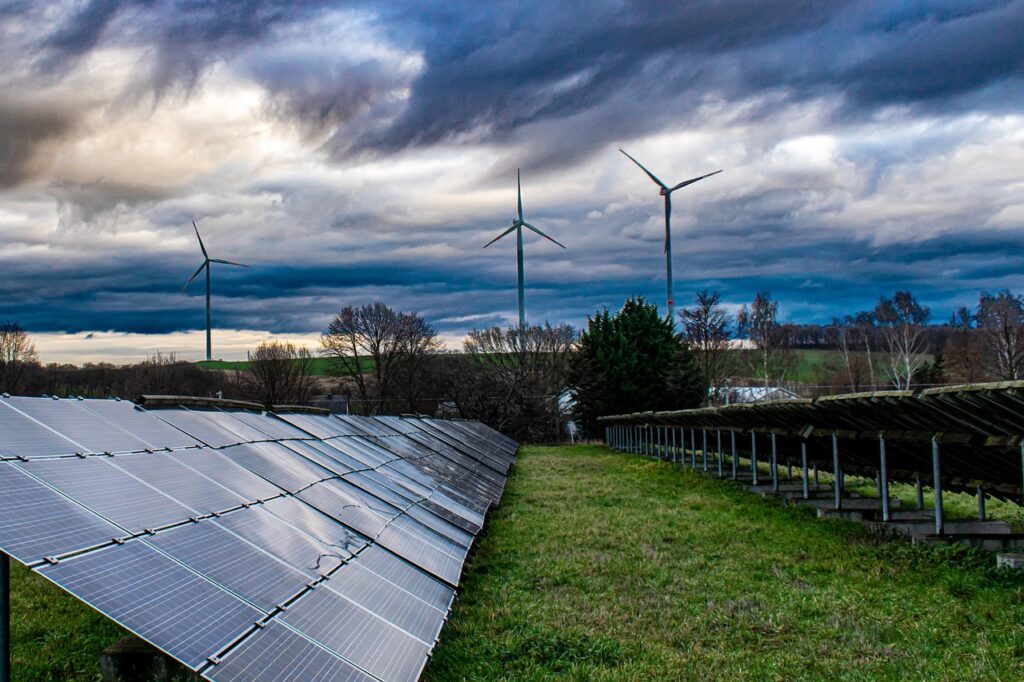In the quest for sustainable energy solutions, adopting renewable energy sources like solar photovoltaic (PV) technology has gained prominence globally. In West Africa, countries such as Nigeria, Ghana and the Benin Republic are increasingly looking towards solar PV as a viable option to diversify their energy mix and address pressing energy challenges. One critical metric in evaluating the economic viability of solar PV is the Levelized Cost of Energy (LCOE), which measures the lifetime cost of electricity generation per unit of energy produced.
The Levelized Cost of Energy (LCOE) is a metric used to assess the lifetime cost of electricity generation from a particular energy source or technology, such as solar photovoltaic (PV) technology. It represents the average per-unit cost of electricity generated over a power plant or system’s lifetime, considering all relevant fees and financial considerations.
| LCOE = | CAPEX +OPEX |
| YIELD |
• CAPEX, or capital expenditure, is the initial investment, including the cost of components, labour and additional costs the solar system entails.
• OPEX or operating expenditures include utilization, maintenance, taxes, etc.
• Yield or energy production is the amount of energy the system harvests during its use.
Analysts and investors can calculate the LCOE of solar PV technology by considering these factors and applying appropriate financial modelling techniques. The LCOE provides valuable insights into the economic viability and competitiveness of solar PV projects in various countries; it can also be used to compare energy generation costs with conventional energy sources such as fossil fuels and nuclear power. It helps policymakers, investors, and energy stakeholders make informed decisions regarding energy investments, project financing, and renewable energy deployment strategies. Various factors, including importation and production tax, solar irradiation levels, installation costs, financing mechanisms, policy frameworks, and local market conditions, influence the LCOE of solar PV technology in West African countries.
Solar PV’s LCOE Assessment
Nigeria, the largest economy in West Africa, possesses abundant solar resources, particularly in the northern regions. However, the high upfront costs of solar PV have hindered the widespread adoption it ought to. Despite these challenges, Nigeria’s LCOE for solar PV in Nigeria has been steadily declining due to technological advancements, economies of scale, and decreasing installation costs. The average LCOE in the Northern region is 0.395 $/kWh, whereas in the Southern part it is 0.453 $/kWh. This is unsurprising, given that the Northern part receives more solar irradiation than the South. With the most recent developments and supportive initiatives like the Bank of Industry’s six billion naira solar energy fund, Nigeria has the potential to significantly reduce its reliance on fossil fuels and harness its solar potential for sustainable energy development.
Ghana, similarly, boasts favourable solar irradiation levels, especially in the northern regions. The Ghanaian government has implemented various initiatives to promote solar PV deployment, including net metering policies and feed-in tariffs. Currently, the LCOE for utility-scale solar PV technology in Ghana ranges from a minimum of about $0.04/kWh to a maximum of $0.15/kWh. It is yet to be entirely ascertained if the net metering and feed-in-tariffs have contributed to a declining trend in the LCOE of solar PV to make it more competitive than conventional energy sources. Also, challenges such as grid instability and limited access to financing options persist, necessitating further investment and policy support to unlock the full potential of solar energy in Ghana.
Solar PV presents a compelling solution to energy access challenges in smaller economies like the Benin Republic, particularly in rural areas with limited grid connectivity. The country is growing interest in off-grid solar solutions, driven by declining costs of installations and innovative financing models such as pay-as-you-go systems. The LCOE for Benin Republic varies from 0.110 USD/kWh to 0.128 USD/kWh, with an average value of 0.120 USD/kWh.
Conclusion and Recommendations
Despite the progress in reducing the LCOE of solar PV across West Africa, several barriers remain to the general adoption of the technology. These include limited access to financing, inadequate infrastructure, regulatory uncertainties, and the intermittent nature of solar energy. Addressing these challenges will require coordinated efforts from governments, development partners, and the private sector to drive investment, enhance technical capacity, and create an enabling environment for solar PV deployment.
The levelized energy cost for solar PV technology in Nigeria, Ghana and the Benin Republic reflects a promising trajectory towards affordable and sustainable electricity generation. Suppose these countries leverage their abundant solar resources and implement more supportive policies and investments; in that case, they can accelerate the transition towards a renewable energy future, improve energy access, and foster economic development.



